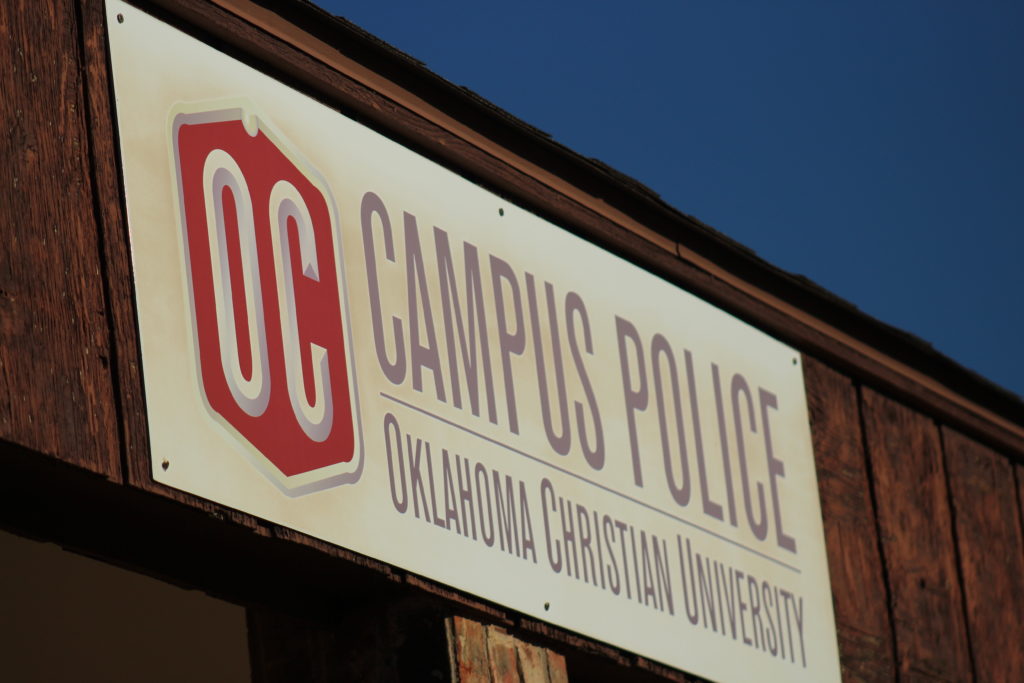By James Leeper
On Nov. 28, 2016 Abdul Razak Ali Artan first ran into students with his car and then started chasing people in an attempt to attack them with a knife on the campus of Ohio State University. A first responder shot and killed Artan on the scene.
There have been 215 school shootings since 2013, averaging nearly one shooting per week, according to everytownresearch.org.
Oklahoma Christian University’s Chief of Campus Police Greg Giltner said police departments are training to deal with active shooter situations all over the country. Since 1999, the year the Columbine High School shooting happened, police departments have developed a new model of dealing with active shooters. If there is an active shooter, the first to respond is to engage the shooter as soon as they arrive at the scene.
According to CNN, the rampage at Ohio State lasted less than two minutes due to the quick response time of Ohio State Police Officer Alan Horujko. This is an example of how the new model can save countless lives.
However, the police are not the only ones training for active shooter situations. Schools are also preparing their students for any event that might take place on school grounds. Lockdown drills have become common occurrences in private and public schools alike.
Oklahoma State Bill No. 2931 requires each school district’s board of education to ensure a minimum of four security drills are conducted at each public school within the district each school year. Schools are also now using notification alerts to send via text message, email and social media.
Oklahoma Christian’s Shelter-In-Place/Lockdown Drill Procedures is available in the academic catalog. The policy states that when a drill occurs, the drill will utilize the Oklahoma Christian notify system: campus email, the website and MyOC. Social media will not be used during the drill, but will be a notification channel during actual emergencies.
There are students on the campus of Oklahoma Christian University who are, or know people who are, survivors of school shootings.
“It’s one of those things that most people don’t think will ever happen to them until it does,” Keaton Aldrich, survivor of the Arapahoe High School shooting in 2013, said.
Aldrich survived an attack on his high school on Dec. 13, 2013. Karl Pierson, a student, walked into the school looking for revenge on a librarian. Failing to do so, Pierson shot and killed Claire Davis, a senior, and himself.
“I don’t think about it every day but it crosses my mind several times a week,” Aldrich said. “I’m still dealing with PTSD symptoms and lots of little things remind me of that day.”
According to Aldrich, there are things he sees as security problems other students might not recognize as issues.
“School security is not something to slack on,” Aldrich said. “I now find myself slightly uncomfortable in classrooms with the door left open. The fact that the dorms are really the only buildings that someone can’t get into without being a student is also unnerving.”
Bailey Williamson was in lockdown just a few minutes down the road from Aldrich when she heard from her classmates about the shooting at Arapahoe High School.
“I couldn’t believe it was happening so close by,” Williamson said. “I first texted my mom and dad and told them we were going into lock down, and to check the news. My mom didn’t even believe me when I first told her. A number of my friends were in the building and I couldn’t get ahold of any of them. I began texting other friends asking if they’d heard anything. Nobody had their phones. I don’t remember how much time had passed but I remember the relief and the feeling of God’s power rush over me when I heard that they were safe.”
According to Williamson, despite rules instituted after the shooting, she no longer felt safe at school anymore.
“Nobody should be afraid to go to school,” Williamson said. “And it wasn’t even my school that was victimized.”
According to Giltner, if he had it his way, Oklahoma Christian would be practicing a lockdown and shelter-in-place drill once a semester.
“There are two times of the day I’m worried — chapel and lunch — because those two buildings are the two buildings that house most of [the students] at one time,” Giltner said. “If you want the most realistic lockdown drill, do it during chapel.”
Giltner also said he wants the students to have a relationship with the officers. He said he hopes students won’t feel intimidated by calling them when they need help.
“In any emergency event, the main thing I can impress on the students is not to panic, we will be giving [them] a text, or an email, very quickly,” Giltner said. “But if [they] have to stop and think about something, it’s usually too late.”
Giltner said he encourages students to take drills seriously.
“When law enforcement asks you to do something, please don’t question them,” Giltner said. “If they tell [students] to lay down, they need [them] to lay down. If they tell [them] to get out of the way, they just need [them] to get out of the way because they have a mission to do.”













Be First to Comment